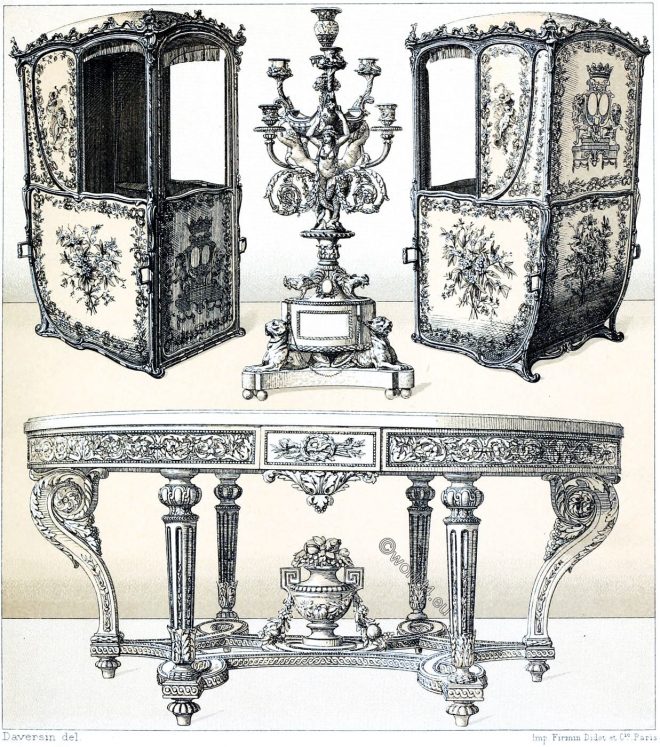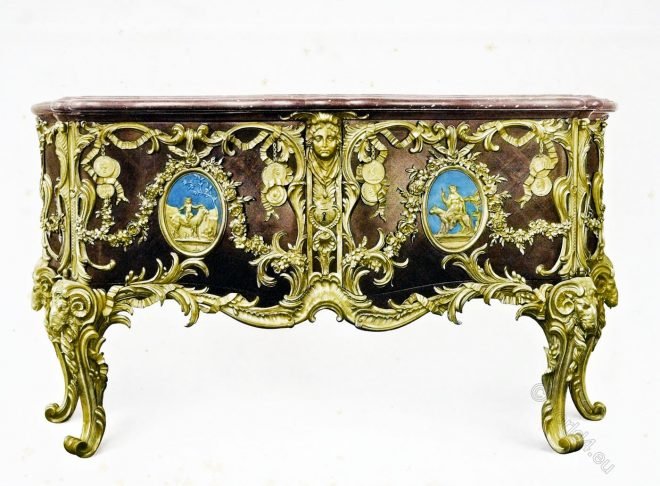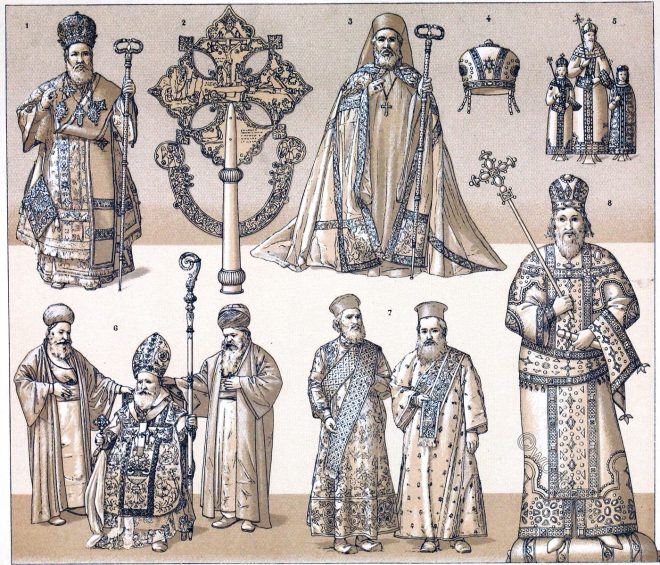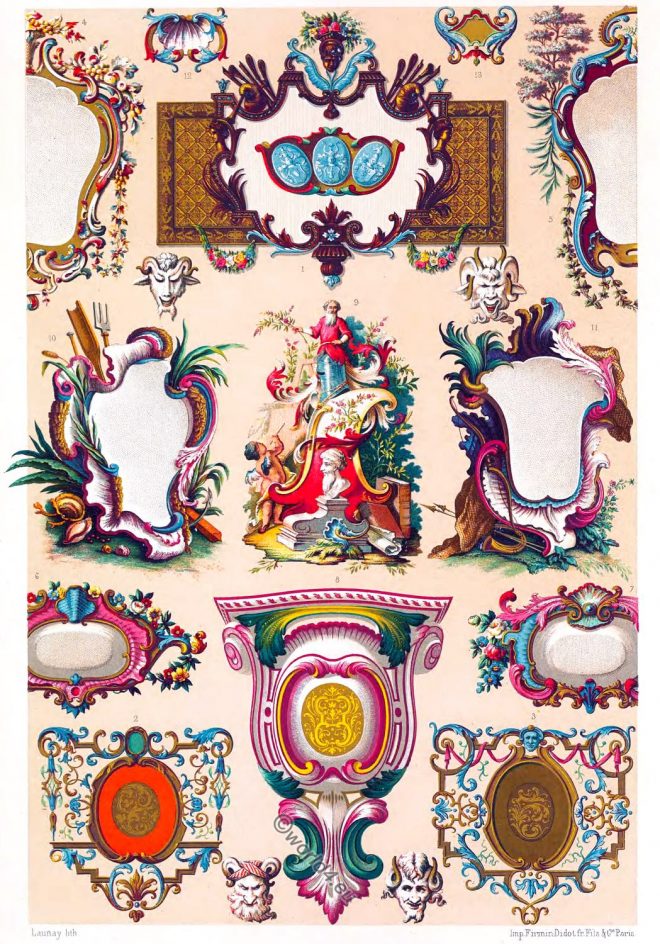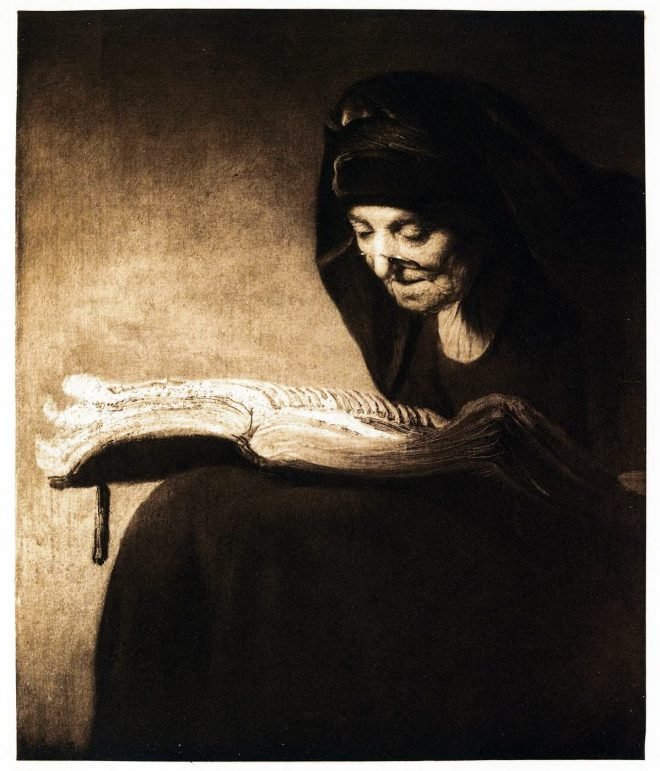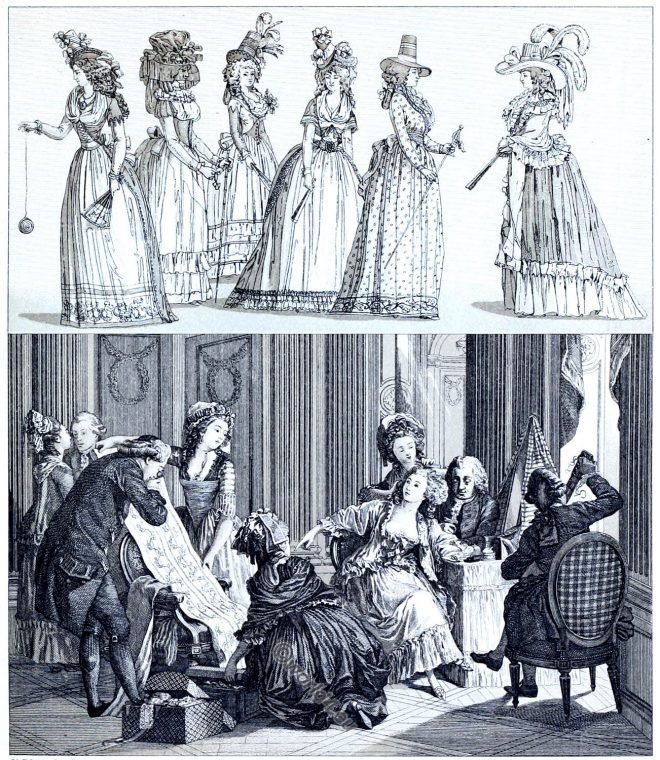The palanquin of Queen Maria Lesczinska. Litter from carved and gilded wood, painted with flowers and cupids. The Independence Candelabra.
Category: Fashion History
Médaillier in the form of a chest of drawers. Louis-quinze (style rocaille).
The Médaillier is considered one of the most beautiful creations of French furniture from the early days of Louis XV’s reign.
Fourreau élégant. La bonne petite Soeur promenant son petit frère. 1786.
La bonne petite Soeur promenant son petit frère. Elle est Coiffée d’un Chapeau à la sicilienne et vêtue d’un Fourreau élégant.
Byzantine Orthodox. Abyssinian. Patriarchal type. The imperial family.
Byzantium and Abyssinia. Patriarchal type. The Maronites and the Byzantine Orthodox churches. The Abyssinian Cross. Emperor of the Eastern Empire and Princes of the Imperial Family. The Tiara and the Crown.
Vestments of the Byzantine emperors and empresses.
Frankish-Byzantine. Vestments of the Byzantine emperors and empresses of the Eastern Roman Empire. Portraits of emperors. Splendor and house costumes. The Heraklian Dynasty. The dynasty of the Isaurians.
Cartouches. Specimens. Peinture en camaïeu. France 18th century.
THIS plate terminates the series in which we have successively represented the different phases of the cartouche.
An old woman reading with spectacles by Rembrand. Portrait of his mother.
The Wilton picture is mentioned by Gambarini as: “Rembrandt — an old woman reading with spectacles.” It was therefore in the collection before 1730.
Byzantine. The Emperor. Greek, Latin clergy. Ascetics and monks.
Byzantine. Greek, Latin clergy. Ascetics and monks. The blessing of the Greeks and the Latins. The Emperor of the Eastern Roman Empire and the officers of his retinue. The Roman Consul. The patrician. Secular and ecclesiastical instruments.
The Grand Lever. Second Toilette of a lady of state. France 18th century.
France 18th century. The Grand Lever. The morning toilet of a lady of status. The caracos, the shirts, the overskirt, etc. Female fashion during the reign of Louis XVI.
A transverse Spinet made by Stephen Keene at the end of 17th century.
Stephen Keene (about 1640-1719) was an English instrument maker. He made harpsichords, spinets and virginals in his workshop in London.

